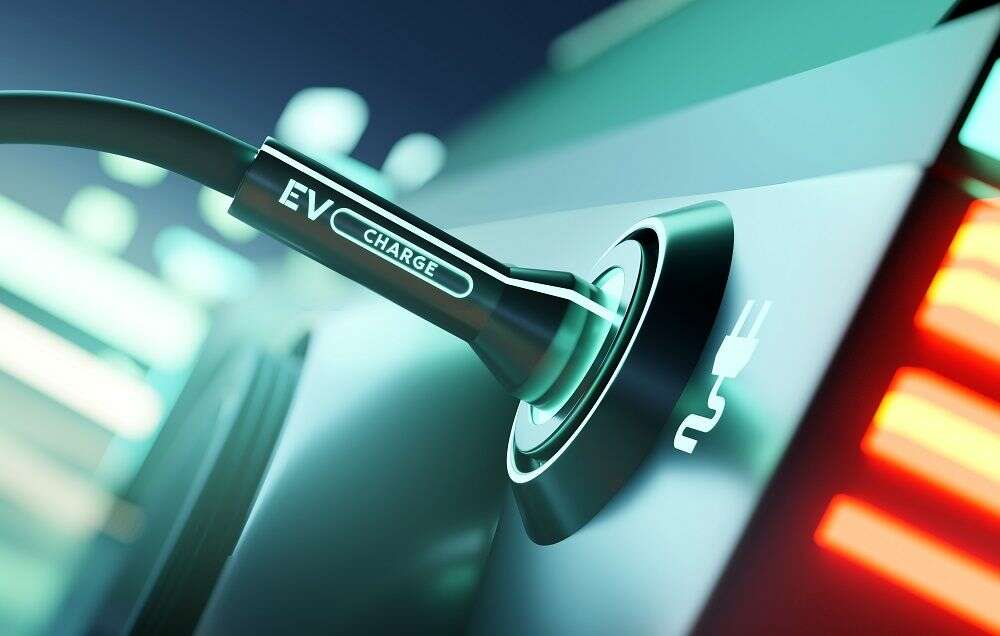
By Markus Borck, Chief Engineer, Innolith
There is a cruel irony in the electric vehicle (EV) market today. The very thing that is meant to make EVs a critical part of our future has been a key factor that has held adoption back – the battery. However, this is now set to change.
Affordable batteries with increased performance and environmental credentials are critical for the mass adoption of EVs. And up until now, battery technology has been limited by factors including cost, slow charging times and the challenges brought on by operating in low and high temperatures.
Sustainable battery technology
But it’s from a sustainability perspective that the electric mobility market is facing one of its most damaging problems – the idea that EV battery production and disposal are more harmful to the environment than the running of internal combustion engine (ICE) vehicles. This primarily derives from the use of cathode materials, which have a significant environmental footprint. Further compounding the issue is that Lithium-ion batteries powering today’s EVs are not fully recyclable.
As a result, green EVs are currently around $10,000 more expensive to produce than their fossil fuel-powered ICE counterparts. With this reflected in their final cost, EV upfront purchase has emerged as a key inhibitor with nearly half of new UK buyers in 2022 singling it out as the biggest barrier to EV adoption.
While this has led some in the electric mobility industry on a mission to find alternatives such as solid-state batteries, and batteries that use iron, silicon, magnesium and even hemp, it is breakthroughs and advances in Li-ion battery tech that have given it a new lease of life. And one that means EVs can fulfil their true potential in the next few years, and not in the distant future.
Battery cells that set e-mobility free
Fully recyclable electrolytes have now been developed that can power EV battery cells. This advancement allows EV battery production to transition into a much cleaner process than previously conceived, reducing the use of key components Lithium, Nickel, Cobalt and Manganese by 20% per kWh, while allowing sulphur dioxide (SO2) – the waste from mining, oil, gas and other polluters – to be reused in battery production.
At current rates, in the next 15 years, 20 million tons of battery cells will be going to waste. Battery cells using electrolytes that can be safely recycled again and again help create a circular economy, removing the need for waste management, including the related financial and environmental costs. Adopted on a global scale, it could also reuse up to 10% of manmade SO2 pollution by 2035.
The reduction in the amount of raw materials used will drastically slash the entire EV industry’s environmental impact. Complemented by its recyclable credentials, these two factors will work together to reduce the cost of EVs, promote adoption and contribute to some of the UN’s sustainability goals – including enabling e-mobility to go mass, lowering costs and making EVs more accessible to all, and leveraging the circular economy.
Every EV manufacturer currently using cylindrical batteries can easily integrate inorganic electrolyte battery cells into their production lines. With the capability to reach 99% of the e-mobility market, there is the potential to forever reduce the raw materials needed and total waste of the industry.
Temperature range
While most discussions about EVs focus on consumers’ cost, range and sustainability concerns. There is another major issue with today’s Li-ion car batteries that is rarely addressed but should not be overlooked – temperature range.
Conventional batteries’ performance drops significantly at around 0°C and the AAA has shown that at just –7°C, performance can be compromised by 41%. This writes off not just a lot of car-buying markets but also a wide range of applications, from manufacturing to transport and warehouse logistics.
The use of inorganic non-flammable electrolytes offers vastly improved temperature ranges from -40°C to +60° C for discharge and -20°C to +60°C for charging, which means batteries that can operate anywhere, from the Arctic to the Sahara.
Sustainable, all-weather battery cell technology ready for extreme conditions allows the Li-ion battery cell of 2023 to move e-mobility into geographies and industries it couldn’t enter before. For instance, powering space travel or contributing to furthering scientific discoveries as it fuels vehicles through delicate and extreme ecosystems ICE vehicles would harm.
Green, safer, and with improved performance
These enhanced environmental credentials have not come at the cost of battery performance either. The breakthrough battery chemistry innovation provided by inorganic electrolytes provides higher energy density, faster and longer charging times, and improved safety, as it significantly lowers fire propagation risk due to a 40% reduction in heat release in case of a thermal runaway.
While many believed the Li-ion battery had reached its innovation and green credentials ceiling, the new breed of electrolyte-powered cells not only overcomes the conventional limitations of the past but in doing so, the previous barriers hindering mass EV adoption.
As such, over the next five years, electric mobility can fulfil its promise of playing a major role in effectively dealing with the environmental issues created by ICE vehicles – enabling energy savings and reducing costs, while also requiring less maintenance and service support to deliver a more economical alternative.


